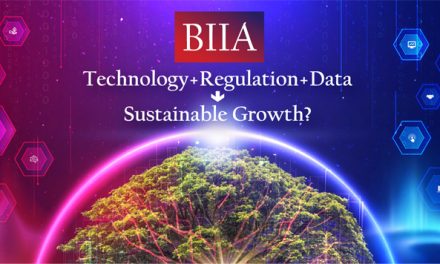This article by Dr. Anthony Scriffignano, SVP, Chief Data Scientist, Dun & Bradstreet was sourced from the Dun & Bradstreet website.
Dr. Scriffignano writes: “After a brief period where it felt like COVID-19 was on the decline, it now seems we were just passing through the eye of a storm. It’s alarming to consider what is yet to come. With global cases increasing and local lockdowns and other countermeasures on the rise across the globe, businesses are bracing themselves for what may very well prove to be a true winter of discontent.
 The virus has clearly had an unprecedented, and complex impact on business globally. Some industries, such as providers of video conferencing and collaboration tools are experiencing an enormous surge in demand. Conversely, the travel and hospitality industries hold an industry disruption risk rating of ‘very high’ and have found it an incredibly challenging time that has a very real existential crisis.
The virus has clearly had an unprecedented, and complex impact on business globally. Some industries, such as providers of video conferencing and collaboration tools are experiencing an enormous surge in demand. Conversely, the travel and hospitality industries hold an industry disruption risk rating of ‘very high’ and have found it an incredibly challenging time that has a very real existential crisis.
This generation has never seen such a dramatic shift in aspirations. Almost overnight, many businesses’ objectives have switched from growth and innovation to surviving the current crisis and navigating disruption. Given the nature of disruption, where circumstances can change in an instant, that challenge is enormous.
The International Chamber of Commerce held its inaugural International Trade and Prosperity Week from Oct. 19-23, which highlighted why global value chains matter to trade and the impact of global policy. Not surprisingly, the impact of COVID-19 was at the top of everyone’s agenda.
I had the opportunity to introduce a webinar on the subject of The Economics of Global Value ChainsExternal Website. Opens New Window, a topic which has become particularly important in this volatile time.
From supply chains to value chains
From the start of the pandemic, COVID-19 has had a major impact on global supply chains. This impact is a natural consequence of the virus starting in China, an epicentre of major international trade. Even as far back as February, we reported that over 90% of businesses in China had been affectedExternal Website. Opens New Window.
Many of these businesses are tier 1 or tier 2 suppliers for global businesses, meaning organisations across the world were seriously and rapidly affected. At the time, we recommended mitigating risk by sourcing alternative suppliers in different regions (we still recommend this) – but this strategy is understandably difficult given the scale and scope of the pandemic today. Nevertheless, geographic-based mitigation strategies still make sense because the impact is asymmetric, effecting different parts of the world to differing degrees at different times.
The acceptance that COVID-19 is more than a short-term hurdle has brought with it a barrage of new questions. How can businesses manage long-term risk? How might tariffs and other aspects of cross-border commerce change? In what circumstances might it be better to build local capacity to source locally? Can we effectively see emerging forms of malfeasance which are enabled by supply chain disruption?
We are also seeing a change of mindset. As the world has become more connected, businesses have migrated from traditional focus on “supply chains” where the focus is on vendor management, to more integrated value chains. This poses a presumption that an enterprise may interact with counterparties who are both customers and vendors, where the customers’ vendors and vendors’ customers can easily disrupt the enterprise. This more complex view of integrated value chains is dynamic, internally dependent, and more vulnerable to the impact of change.
Supply chain initiatives usually focus on cutting down supplier, manufacturing and logistical costs, while increasing customer and enterprise value. Focusing on the integrated value chain forces enterprise leaders to react more holistically to known met and unmet needs, and to translate that understanding into action all the way through their operations: from marketing to product testing and manufacturing.
This more holistic approach is particularly useful when market conditions are in constant flux since the needs of customers can change incredibly quickly. Due to the asymmetric impact of the crisis, location data and regional dependencies are also extremely important
A data-driven approach
Keeping abreast of market conditions requires more than casual observation. Businesses need a systematic, measurable way to understand what matters to their customers. And that’s where data comes in.
By working with experts like Dun & Bradstreet, businesses have a source of highly dynamic data and analytic insight that can keep them up to speed. As the impact of COVID-19 ripples through the global ecosystem, we’ve created a COVID-19 Impact Index to help businesses understand the effect it will have on consumers and suppliers, which will help them make intelligent, data-driven decisions.
From predicting consumer trends to vetting new suppliers, businesses can de-risk their operations and be more confident in their future. Furthermore, they’ll get the data they need to join the dots and start that important transition from a mere supply chain into an intelligent, integrated value chain.
After a brief period where it felt like COVID-19 was on the decline, it now seems we were just passing through the eye of a storm. It’s alarming to consider what is yet to come. With global cases increasing and local lockdowns and other countermeasures on the rise across the globe, businesses are bracing themselves for what may very well prove to be a true winter of discontent.
The virus has clearly had an unprecedented, and complex impact on business globally. Some industries, such as providers of video conferencing and collaboration tools are experiencing an enormous surge in demand. Conversely, the travel and hospitality industries hold an industry disruption risk rating of ‘very high’ and have found it an incredibly challenging time that has a very real existential crisis.
This generation has never seen such a dramatic shift in aspirations. Almost overnight, many businesses’ objectives have switched from growth and innovation to surviving the current crisis and navigating disruption. Given the nature of disruption, where circumstances can change in an instant, that challenge is enormous.
The International Chamber of Commerce held its inaugural International Trade and Prosperity Week from Oct. 19-23, which highlighted why global value chains matter to trade and the impact of global policy. Not surprisingly, the impact of COVID-19 was at the top of everyone’s agenda.
![]() I had the opportunity to introduce a webinar on the subject of The Economics of Global Value ChainsExternal Website. Opens New Window, a topic which has become particularly important in this volatile time.
I had the opportunity to introduce a webinar on the subject of The Economics of Global Value ChainsExternal Website. Opens New Window, a topic which has become particularly important in this volatile time.
Source: Dun & Bradstreet


























